In 1972, Dr. Walt Brown proposed hydroplate theory as a mechanism for the global Flood.1. One perceived benefit of the model is that it could allegedly explain how huge layers of sedimentary rocks were laid down over all of the world’s continents. However, the geologic record also contains the traces of once living organisms, called ichnofossils, which seems to challenge this model. In a 2022 paper, creation researcher Edward Isaacs argues that hydroplate theory fails to adequately explain ichnofossils.
This is a summary of the research pertaining to “Ichnofossils Refute Hydroplate Theory’s Liquefaction Model” by Edward A. Isaacs. The views expressed reflect those of the author mentioned, and not necessarily those of New Creation.
What Are Ichnofossils?
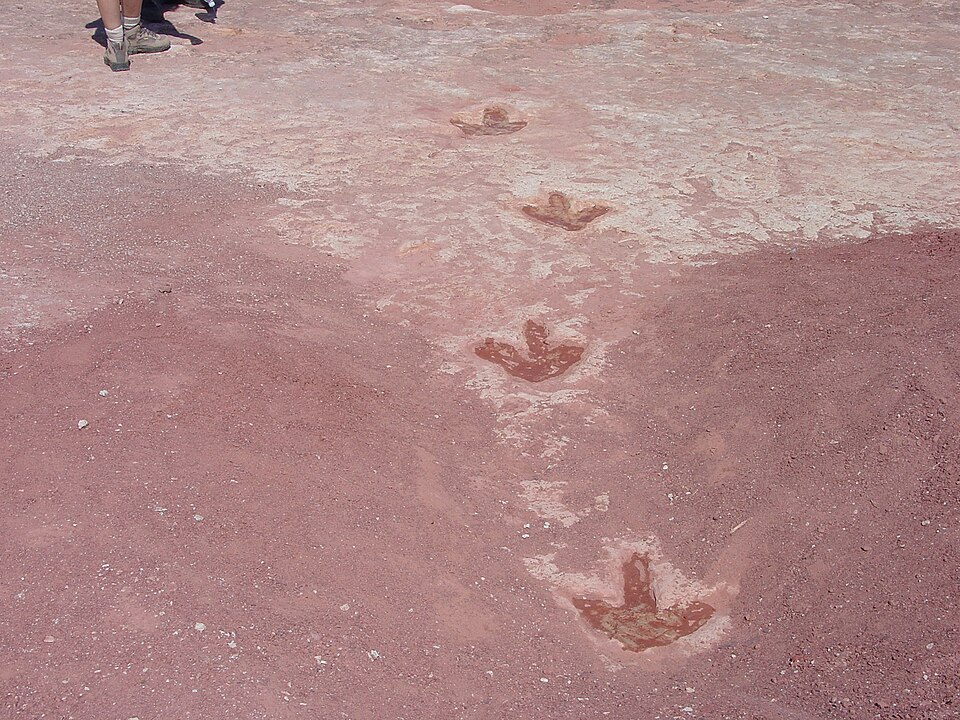
When we think of fossils, we usually envision the bones, teeth, claws, and shells of a once-living thing. But ichnofossils, or “trace fossils,” are actually what those once-living things left behind. They are not a part of the original organism. These can include footprints, nests, burrows, bite marks, droppings, and even the cavities left behind by a plant’s root system.
How Hydroplate Theory Explains Rock Layers
Dr. Brown’s seven-phase model associates much of the geologic record with the Flood phase. However, it is important to note that, according to hydroplate theory (HPT), the ‘Flood Phase’ specifically corresponds to the period of rising waters. The subsequent structural organization and reorganization—a stage some term ‘Post-Flood’ in other models—is what Dr. Brown incorporates into the ‘recovery phase’. In HPT, this distinction underscores that contemporary geological formations are seen as the final vestiges of the Flood, without establishing a separate post-Flood period.
Phases of Earth’s History in Hydroplate Theory
Dr. Brown divides earth history, as it relates to the geologic record, into seven major time periods or phases. These are 1) Creation, 2) the pre-Flood period, 3) the rupture phase, 4) the Flood phase, 5) the continental drift phase, 6) the compression event, and 7) the recovery phase. Aside from Creation and the pre-Flood period, all of these phases correspond with the Genesis Flood event. He envisions the recovery phase as the end of the Flood transitioning toward the post-Flood times we experience today.
The Rupture & Formation of Hydroplates
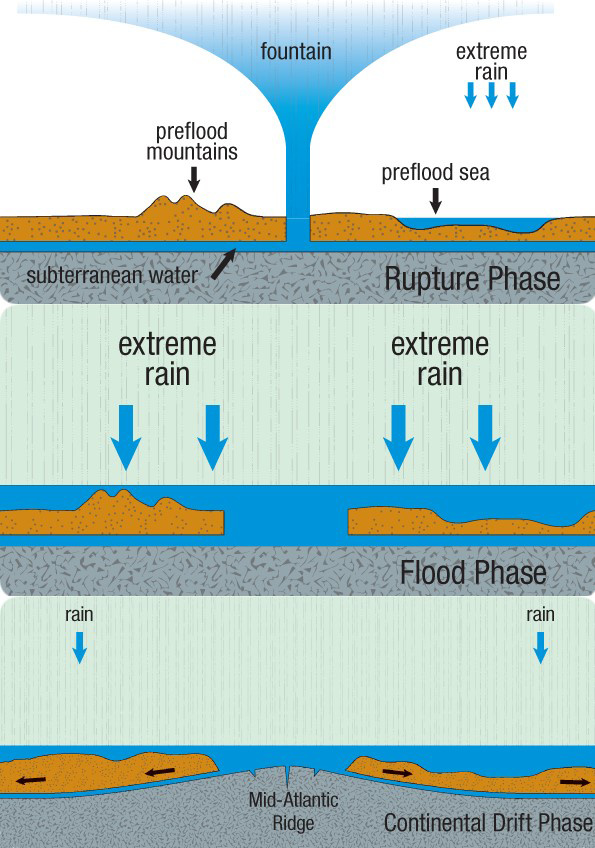
Dr. Brown suggests that the Flood began when a fracture ruptured the Earth’s crust, which enveloped the globe like an eggshell. With the crust fractured into many newly-formed crustal fragments—or “hydroplates”—highly-pressurized water released from sub-crustal chambers far below the surface.
Sediment Deposition Through Hydroplate Fluttering
Periodic vertical motion (“flutter”) of these hydroplates triggered recurring, tsunami-sized waves that eroded kilometers of sediment. These water-laden sediments then formed into thick deposits. “Fluttering” of the hydroplates created repeated cycles of high and low pressure. This forced water to escape upwards through the sediment. As a result, the sediment above liquefied, a phenomenon called liquefaction. According to hydroplate theory, this allowed grains of sediment to sort themselves by density into distinct layers.
Preserving Footprints During the Flood
During the early weeks of the Flood, “flutter” caused the Earth’s crust to repeatedly rise above the floodwaters. Frightened dinosaurs and other animals scampered onto these rising areas, forming footprints and other traces. When the land resubmerged minutes later, the rising waters swept the animals away. Meanwhile, sediment rapidly covered and preserved their traces.
The final period of liquefaction happened during the compression event of the Flood. This is when, according to Dr. Brown, continental drift moved the landmasses to their current positions. As hydroplates encountered resistance, they crumpled like a rug against a wall, forming mountains. This generated liquefaction on a massive scale. It rapidly sorted buried organisms to form the fossil record based on their relative density and buoyancy.
Do Ichnofossils Pose a Problem for Hydroplate Theory?
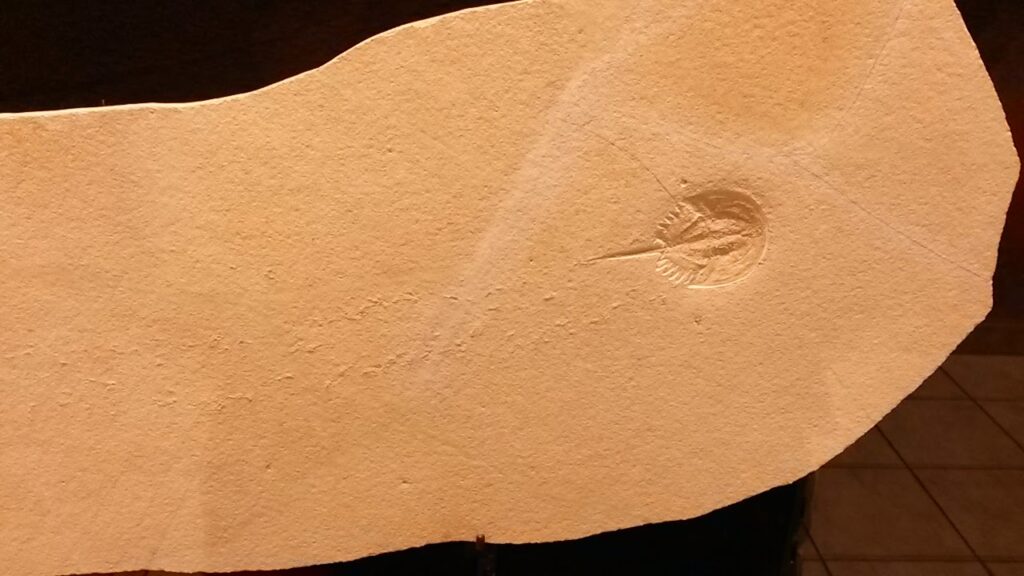
A recent paper by Edward Isaacs in the Answers Research Journal identifies a number of problems with Dr. Brown’s proposal.2 One of the most troubling problems is that, according to Dr. Brown’s own model, liquefaction mixes up and reorganizes sediment grains by density to form new layers. Ichnofossils, however, must be preserved on top of or within the same sedimentary layer in which they formed. Since liquefaction reorganizes sediment, these animal traces would not have the chance to become ichnofossils. The liquefaction process would destroy them, not preserve them.
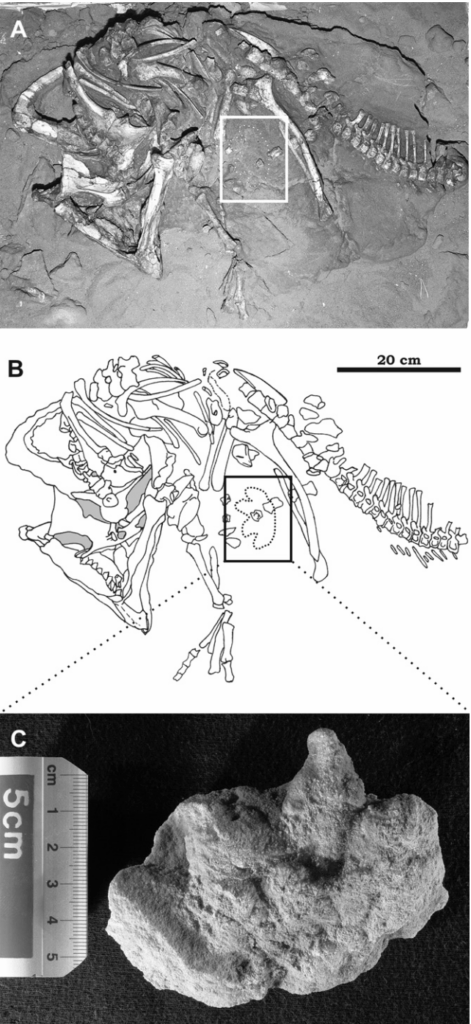
Another problem Isaacs identifies is that ichnofossils occur in or near the same layers where we find the fossilized animals that made them. For example, we find both trilobites fossils and their ichnofossils exclusively in the lower layers of the fossil record. Meanwhile, we find body fossils and ichnofossils of much denser dinosaurs considerably above trilobites.
In some cases, the association is even more direct. We find fossils of animals, such as horseshoe crabs and the dinosaur Protoceratops, literally “dead in their tracks”. These animals are preserved with a set of their own footprints.3,4 Even if liquefaction somehow did not destroy the ichnofossils, it would reorder the bodies of the organisms that made them by density. In other words, if ichnofossils could even survive the reorganization process, it would result in the greatest mismatch of all time. Ichnofossils and the bodies of the animals that made them would be scrambled in completely different orders.
Liquefaction Lenses
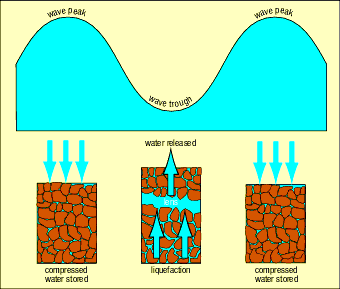
In a discussion with Canadian creation educator Ian Juby, Brown brought up a potential problem with his model. Ichnofossil preservation could only happen after the area where they formed underwent its final liquefaction process. Otherwise, the final liquefaction process would destroy the traces before it could preserve them as ichnofossils. To counteract this, Dr. Brown devised a solution: maybe ichnofossils formed within already existing sedimentary layers laid down earlier in the Flood.5
His revised model suggests that deeply-buried water was postponed from ascending to the surface. Here, it formed meter-thick cavities between the layers. He calls these temporary water pockets “liquefaction lenses” or “water lenses.” Within these lenses, he argues, trapped animals could form footprints before the lense closed for the last time. Thus, the footprints would be preserved, safe from liquefaction’s destructive reorganization.
Scientific Concerns & Feasibility Issues
Yet again, we see several problems within this model. First, Dr. Brown provides no demonstration or experimental support for how these water lenses could be produced or sustained. Second, even if they could be produced, Isaacs questions how these cavities would not be too choked with sediment for the organism to move around in the first place. And third, how would it be possible for larger, land-dwelling animals (like dinosaurs and mammals) to survive long enough, buried in water-laden sediment, to form the ichnofossils? How could something like a Triceratops, which stands almost three meters tall, possibly walk around completely submerged under water in a cavity only one-third its height?
For the reasons described above, Isaacs makes the argument that the presence of ichnofossils invalidates hydroplate theory.
Can Any Flood Model Explain Ichnofossils?
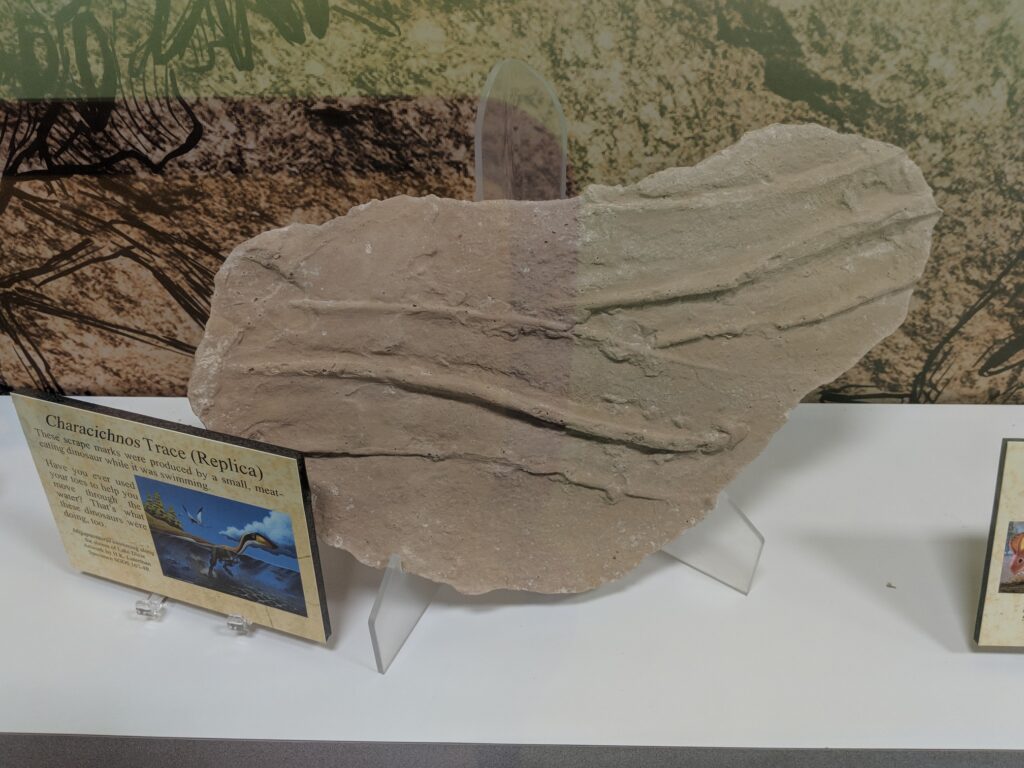
Most young-earth geologists reject hydroplate theory. They also reject its liquefaction-based mechanism for forming the sedimentary rock record. Even so, some hydroplate theory advocates criticize Isaac’s paper for not offering his “own plausible mechanism for these fossils.”6. But this does not mean one does not exist. In fact, most young-earth geologists prefer catastrophic plate tectonics (CPT) as a better Flood model. CPT currently appears far more consistent with the presence of ichnofossils.
According to CPT, the continents shifted and collided much faster during the Flood year than they do today. This ceaseless rearrangement of the continents created alternating periods of exposing and resubmerging land across different regions. They pushed up some sections of land, while others sank or floodwaters covered them. This process caused some areas of freshly-deposited sediment to emerge above sea level (perhaps for hours, days, or even weeks at a time) before the waters inundate them again.
During these intervals, dinosaurs and other land-dwelling animals could leave footprints, nests, and even laid eggs on exposed surfaces.7,8. Then, the returning rise in the floodwaters buried and preserved them. This interpretation is supported by several published cases of swimming dinosaur tracks. It suggests that at least some animals were still alive and quite mobile well into the Flood.
While there are still mysteries for all Flood models to solve, this approach allows for the preservation of ichnofossils without requiring speculative or unsupported mechanisms like hydroplate theory’s liquefaction lenses.
Conclusion
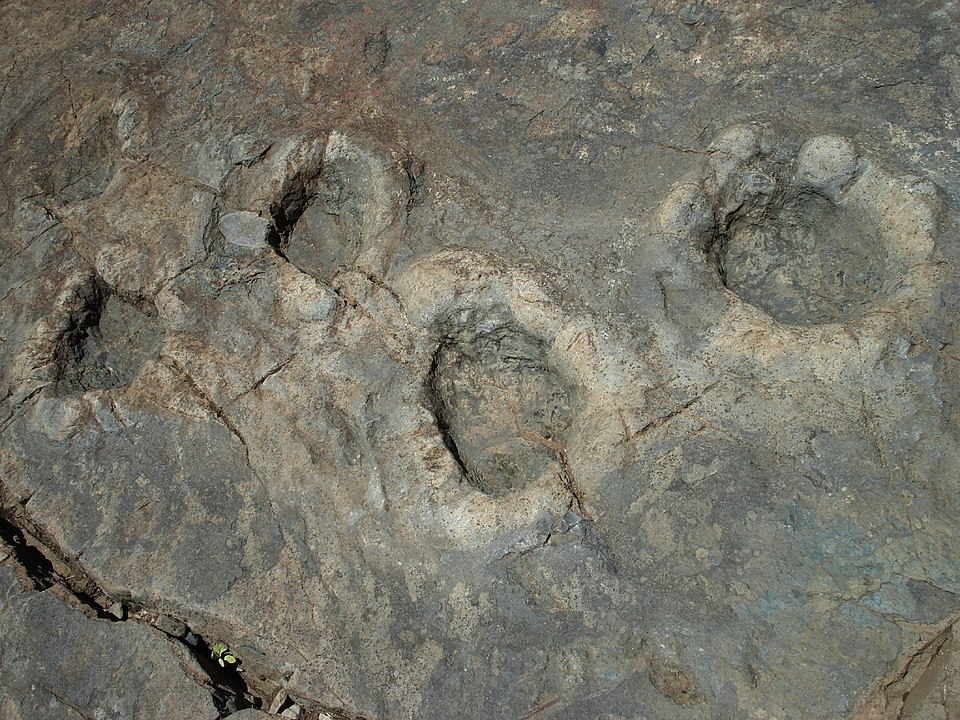
Some have heralded hydroplate theory as the strongest model of the Genesis Flood currently in existence. Alas, in its current form, this model is reliant on its liquefaction submodel to explain the layered sedimentary deposits that blanket our continents. As Isaacs has demonstrated, this is problematic. These ichnofossils are extraordinarily prevalent throughout earth’s sedimentary record. If hydroplate theory cannot account for the existence of ichnofossils, it cannot be “the strongest theory [of the Genesis Flood] there is.”9
That said, this does not mean the discussion is over. Isaacs suggests that advocates of hydroplate theory identify empirical evidence in support of their interpretations of ichnofossils and avoid ad hoc explanations that fall outside both the data and the biblical text. Constructive dialogue and continued refinement of Flood models (based on observable data) are vital to developing a more comprehensive understanding of Earth’s history. Perhaps it is time for hydroplate theory advocates to re-evaluate, re-test, and re-tool with fresh eyes and a commitment to both Scripture and sound science.
Footnotes
- Brown, Walt. 2019. In the Beginning: Compelling Evidence for Creation and the Flood. 9th edition. Lebanon, Pennsylvania: Mission Imperative Inc. ↩︎
- Isaacs, E. A. (2022). “Ichnofossils Refute Hydroplate Theory’s Liquefaction Submodel.” Answers Research Journal, 15, 97–108. ↩︎
- Lomax, Dean R.; Racay, Christopher A. (2012). “A Long Mortichnial Trackway of Mesolimulus walchi from the Upper Jurassic Solnhofen Lithographic Limestone near Wintershof, Germany”. Ichnos: An International Journal for Plant and Animal Traces. 19 (3): 175–183. ↩︎
- Niedźwiedzki, G., Singer, T., Gierliński, G. D., & Lockley, M. G. (2012). “A protoceratopsid skeleton with an associated track from the Upper Cretaceous of Mongolia.” Cretaceous Research, 33(1), 7-10. ↩︎
- Brown, W. 2011. “Hydroplate Theory Round 1: Ian Juby (Panelist 1)” In The Flood Science Review, edited by J. Bardwell, 339. Calabasas, California: In Jesus Name Productions. ↩︎
- Hydroplate Hit Pieces (& Hammers) Part I https://kgov.com/bel/20221007. ↩︎
- Snelling, A. A. (2009). Earth’s catastrophic past: Geology, creation & the Flood (Vol. 2, pp. 747–748). Institute for Creation Research. ↩︎
- Whitmore, J. (2009). How did dinosaurs survive the Flood to make tracks and nests? Creation Matters, 14(5), 6. ↩︎
- Creation Ministries International. (n.d.). Hydroplate theory: The strongest theory? In Hydroplate theory: Difficulties. Creation.com. Retrieved July 14, 2025. ↩︎

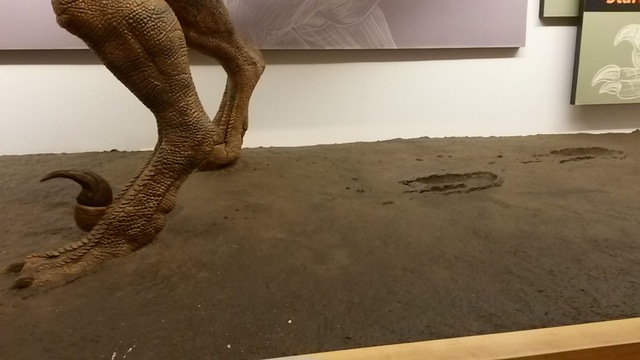
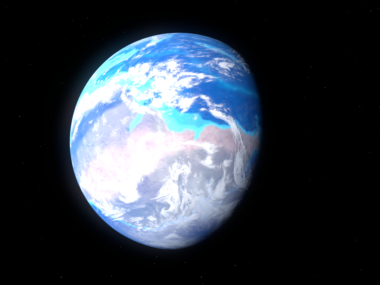
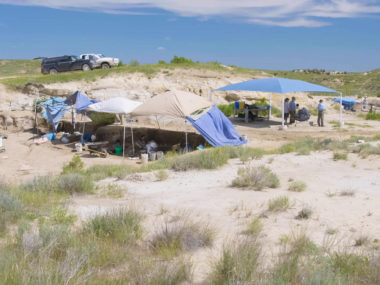
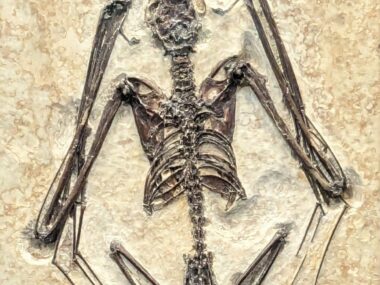
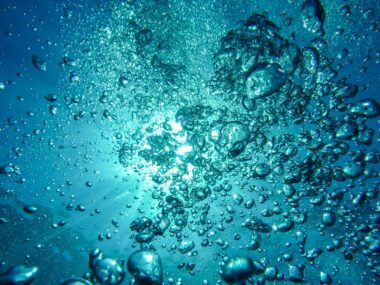
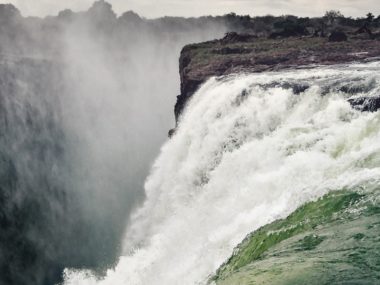
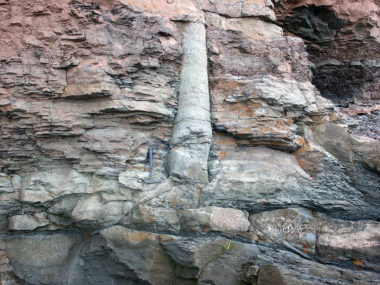




Interesting subject. I suggest the layering came from layering . I mean water surges die to the breaking up of the single land mass. this would cause fantastic water pressure and is needed to make sure everything died. in the earth or in the waters save a remnant. Footprints make a creationist case. Everyone must explain them. It never happens today anywhere.
Quite correct – it is evident from the direction of the flow that made the deposits of the sedimentary layers – that almost all of the layers Rising and Prevailing Stages of the Flood. The layers were deposited as cyclic inflowing tsunamis slowed that the sediments then precipitated out to form the layers.
Then, once the flood reached its highest stages, the Bible tells us that God began to cause the ocean basins to deepen and the mountain ranges to go up.
The footprints are from the days of the rising waters – as animals fled the continuing surges of the Tsunamis.
Both hydroplane and CPT are dead on arrival.
Why? What is your basis for saying that Hydroplane (sic) and CPT are DOA?
Rather than just making bald assertions, it might be more conversational to give at least one or two reasons.
The Heat Problem. It is insurmountable without exotic physics or divine intervention.
HPT relies on a view of “sub-crustal” water reservoirs that are simply unscientific nonsense. In all of the geological history of the earth there has never been any underground ocean that could come bursting forth as massive geysers to be any sort of substantial source of the Flood.
The notion of an underground “Deep” of water is also totally absent from Scripture. It is just not there. Genesis 7:11 is NOT referring at all to water coming from the breaking up of dry land. There is not one word in the early chapters of Genesis about an underground deep.
The only hint is that there was an aquifer that was the source of the River of Eden that parted and became four headwaters.
The waters of the Flood did not come from underground.
From the 2 deepest holes drilled, one in Russia at over 7000 ft and the other in Norway, Or Denmark at over 5500 ft salt water was found with twice the salt content as the oceans are today. Look at Ayers rock in Australia where there are small holes from water pushing the soft sand up. Rocks like that are located in the western part of America. Just stating water did rise up from the ground.
This is a good discussion. I would humbly add however that Dr. Brown’s theory is quite strong in so many other realms while refusing to resort to ad hoc explanations whilst so many competitive theory rely on ad hoc to even make mechanisms begin.
Dr. Browns explanations of why plate tectonics cannot occur is common sense to me, a cubic mile of rock is 2×10^13 lbs (140#*5280^3). A plate is orders heavier and weighs too much to be budged. Measured movement is just lateral as earthquakes are causing subterranean voids to collapse.
What is the percentage of Ichnofossils versus a typical fossil? Is there some kind of common characteristic of the layer right above them? Could there be a natural miniature localized process similar to casting molds within the global liquefaction event. If I step on wet sand, there is a weak cementing bond temporarily.
This isn’t a smoking gun to me, the strengths of Hydroplate Theory are more compelling than the competition.